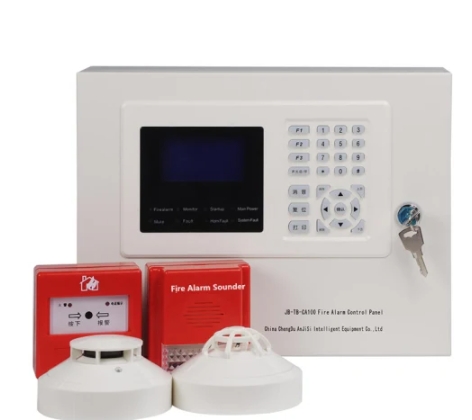
在消防设备领域,确保显示屏清晰可靠对于有效操作和安全至关重要。串口屏在为消防员提供实时信息方面发挥着关键作用,使他们能够迅速做出明智决策。然而,并非所有串口屏都相同。本文将探讨适用于消防设备的各种串口屏的特点和适用性,并突出其优缺点。
1. 透射式串口屏
透射式串口屏因其能在各种光线条件下(包括直射阳光)保持可视性,特别适合消防设备。这类显示屏幕结合了透射式和反射式技术的优点,确保室内室外环境均能清晰显示。消防员可依赖透射式串口屏幕获取关键信息,不受眩光或光线不足的影响。
2. 高分辨率薄膜晶体管显示屏
高分辨率TFT显示屏提供卓越的图像质量和清晰度,适用于消防设备上显示详细图形和文本。TFT技术可呈现鲜艳色彩和高对比度,提升恶劣环境下的可读性。然而,此类显示屏的功耗可能高于其他类型,因此在户外长时间使用时需配备高效的电源管理解决方案。
3. 强化型串口屏
强化型串口屏专为恶劣环境设计,适用于部署在严酷环境中的消防设备。这些显示屏采用坚固结构,具备抗冲击、抗振动及耐极端温度的增强耐用性。消防员可依赖强化型串口屏在最严苛条件下保持功能正常和可读性,确保消防作业中的持续运行。
4. 触摸屏串口屏
触摸屏串口屏提供直观的用户界面,使消防员能够更有效地与设备互动。通过触控功能,消防员可轻松浏览菜单、输入数据及调整设置,从而简化操作流程并缩短响应时间。然而,在消防场景中,触摸屏显示屏可能需要额外的防护措施以防止水、碎屑及物理冲击造成的损坏。
5. 日光可读串口屏
日光可读串口屏专为明亮的户外环境优化,是白天作业消防设备不可或缺的组件。这些显示屏采用特殊涂层和技术,有效减少眩光并提升对比度,确保在直射阳光下也能清晰显示关键信息。消防员可依赖日光可读串口屏在复杂光线条件下保持态势感知并做出明智决策。
除上述串口屏外,消防设备还可采用其他有效显示方案,包括:
- 单色串口屏:简单节能,提供基本文本和图形显示功能,适用于显示数字值、状态指示等关键信息。
- OLED显示屏:OLED(有机发光二极管)显示屏具有高对比度和宽视角,适用于空间有限的紧凑型消防设备。然而,OLED显示屏可能存在图像残留和随时间推移而退化的问题。
- 双模式串口屏:双模式串口屏结合了透射式和反射式技术的优势,可在不同光线条件下灵活应用。消防人员可依赖双模式显示屏在环境变化时无缝适应,确保可见性不受影响。
综上所述,为消防设备选择合适的串口屏需综合考量能见度、耐用性和功能性等关键因素。透射式、高分辨率 TFT、强化型、触摸屏及日光可读串口屏均具备独特优势,可满足消防作业的严苛需求。通过选用合适的显示技术,消防机构可提升态势感知能力、优化作业效率,最终在火灾紧急现场拯救更多生命。